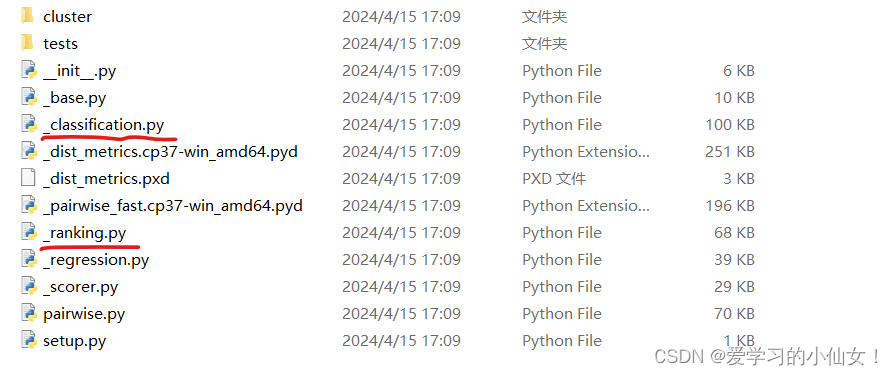错误代码
from sklearn.metrics.classification import *
from sklearn.metrics.ranking import *错误原因
sklearn这个文件夹下的_classification和_ranking前面有下划线!
解决方法
第一步:找到sklearn位置,可以打开命令行输入 pip show sklearn,找到安装位置。

第二步:进入sklearn的metrics这个文件夹,可以看到_classification和_ranking这两个文件前面是有 _ 的

第三步:把代码中加上_即可
from sklearn.metrics._classification import *
from sklearn.metrics._ranking import *






















 267
267











 被折叠的 条评论
为什么被折叠?
被折叠的 条评论
为什么被折叠?








